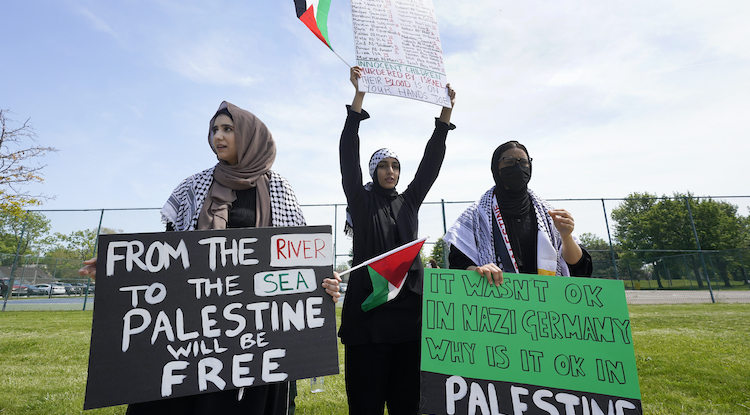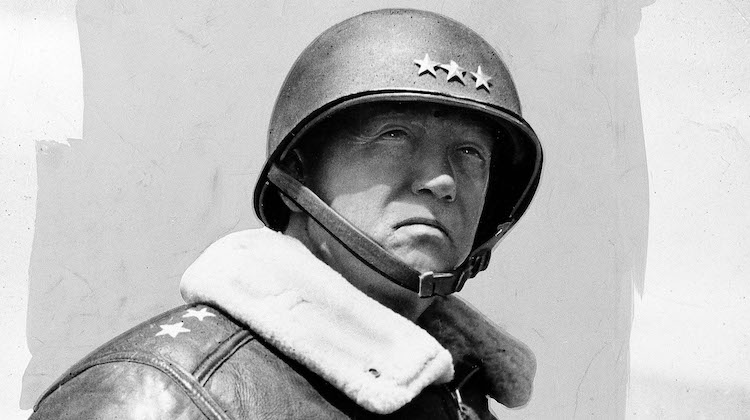To the Editor:
In “How Rumkowski Died” [May] Michael Checinski describes the death in Auschwitz of Mordechai Chaim Rumkowski, the head of the Jewish Council (Judenrat) of the Lodz ghetto. I am sorry to say that Mr. Checinski’s report conflicts with another, more plausible eyewitness account.
Dov Paisicovic, a former Hungarian Jew and a survivor of the Sonderkommando, the special detachment engaged in burning the corpses in the Birkenau section of Auschwitz, claims that he and his colleagues killed Rumkowski. They were acting, he says, at the request of previous arrivals from Lodz who asked for vengeance on Rumkowski for having betrayed them by issuing a proclamation that they were being deported not to death camps but to labor camps.
According to Paisicovic’s testimony, the SS brought Rumkowski and his very beautiful young wife by car to Crematorium II (in Birkenau). There the men of the Sonderkommando showed the ex-chief of the ghetto the crematorium where he had helped send the Jews, and there they beat him to death. They regarded themselves as a tribunal carrying out Justice. (Dov Paisicovic, Testimony, volume 44, p. 108, State Museum at Auschwitz, August 2, 1964.)
Of the two reports, Mr. Checinski’s runs counter to Birkenau reality. He claims that he saw on the Birkenau ramp: “A special platform, a reviewing stand, like a small amphitheater, with three or four steps leading up to the dais. In the center sat Rumkowski, surrounded by Rosenblatt [the chief of police of the Lodz ghetto] and their entourage . . . reviewing their troops. . . .”
This incident is unlikely. The ramp was a highly pressured place of work for the SS. Doctors usually had about one hour to divide up to 3,000 arrivals: the old and the very young for the gas chambers; the strong for labor. Every minute’s delay meant that the victims might learn the fate in store for them and might then resist entering the gas chambers and force the SS to shoot them on the spot, as happened with a group of 15,000 Polish Jews in 1942. It was no place for ghetto charades. No witness has reported a platform, although all saw the centrally located ramp.
The manner of Rumkowski’s death is even more problematic. Mr. Checinski relates that a former ghetto inmate, Moishe Hussid, whom Rumkowski had delivered to the Gestapo, recognized Rumkowski in the Sauna (the disinfection bloc, misnamed Canada in the article). Hussid, in Checinski’s account, beat Rumkowski unconscious and disposed of the body in one of the cremating pits. Contrary to Mr. Checinski’s claim, however, the men of the Sauna did not work in the gas chambers and had no access to the pits, which were separated from the extermination places by electrified barbed wire. Except for an occasional workman, only the men of the Sonderkommando worked in the crematoria. Not even SS men, unless on duty, had access to the extermination facilities. The camp administration maintained the myth of resettlement even in Birkenau. They isolated the men of the Sonderkommando, killed them periodically, and allowed no others to witness the extermination process. . . .
Mr. Checinski’s credibility is seriously undermined when he alleges that to break their spirits, the SS took his arrival group “to see the pit.” This contradicts the testimony of all eyewitnesses. No Jews, except some men of the Sonderkommando, left the flaming pit alive (according to Mr. Checinski, there were eight pits; according to Filip Mueller, a survivor of the Sonderkommando, nine). That would have defeated the SS scheme of keeping the extermination a secret.
Mr. Checinski also relates that Hussid danced on Rosenblatt, “breaking his bones with his heavy wooden shoes.” It is true that most inmates of Birkenau had to wear wooden clogs, but the elite members of the Sauna, collecting the belongings of the arrivals, had the choicest of leather shoes. This minor detail might be ignored in an authentic context, but it further discredits an already doubtful story.
The account of Paisicovic, on the other hand, fits Birkenau reality. The last Lodz transport consisted of the Judenrat, the police, and survivors of four years of Nazi terror. It was a knowledgeable and tough group. It is therefore plausable that the SS—afraid that the resourceful Rumkowski, though obliging in the ghetto, might resist when his own life was at stake—whisked him away by car. Confined, he was powerless. We know of precedents of individuals being chauffered within the camp. We also know of another Judenrat representative who was singled out for the gas chambers upon arrival, less than two months after Rumkowski’s death. This was the heroic Gisi Fleischmann, who had negotiated the Europa Plan in Slovakia, an abortive scheme for ransoming Europe’s remaining Jews from the Nazis. She was deported on October 18, 1944, in a special SS guard car—in chains—with an order RU—Rueckkehr unerwuenscht (“return undesirable”). Upon her arrival in Auschwitz, she was promptly dispatched to the killing facilities.
The men of the Sonderkommando were long before August 1944 an organized resistance group. From deep demoralization and infinite despair, they rose to attain group solidarity and heightened consciousness. They were finally preparing to revolt and end their miserable existence. Simultaneously brutalized by their task and sensitized by the presence of noble leaders in their midst, they avenged the blood of Lodz Jewry upon Rumkowski. Their act was a symbolic outcry which indicated it was time to put an end to Jewish collaboration—that of Rumkowski and, by extension, themselves.
Tzipora Hager Halivni
New York City
_____________
Michael Checinski writes:
I understand that every reader has the right to doubt the authenticity of an eyewitness report after so many years. But after reading Tzipora Hager Halvini’s letter carefully, I must say that I fail to see any contradictions between my account and that of Dov Paisicovic. The two accounts rather complement each other. There are, however, several misunderstandings and misreadings on the part of Mrs. Halivni, which cause her to see contradictions where none exist.
In her first point, Mrs. Halivni confuses the central ramp, on which the selections were made, and which, of course, all survivors remember, with the dais on which Rumkowski and the Judenrat were sitting as we marched by. The dais was beyond the ramp, about a 5-10 minute march from the ramp, not on the ramp, as Mrs. Halivni thinks I said. Of course, only survivors of the last major deportation from the Lodz ghetto would remember this. (There was one mop-up operation after this last deportation.) Everyone, not only I, was shocked to see it. It is entirely possible that Rumkowski was driven from the dais to Crematorium II after we marched by. No, the Germans were not above “ghetto charades,” even in Auschwitz, when it amused them. The incident may be “unlikely” in Mrs. Halivni’s eyes, but it happened, and was not “contrary to Birkenau reality.” It was a special occasion, this last deportation from the last ghetto in Europe, so perhaps the Germans may be forgiven their little celebration.
In her second charge, Mrs. Halivni incorrectly quotes me as saying that Moishe Hussid recognized Rumkowski in the Sauna and beat him unconscious. It was Rosenblatt whom Moishe Hussid recognized (outside the Sauna) and beat unconscious. I did not discuss the beating of Rumkowski at all, because I did not witness it. I only saw Moishe Hussid carry his unconscious body through the Sauna and out the door leading to the pit. It is possible that he was already dead by then, but I can only say with certainty that he was unconscious. I am quite ready to believe that it was Dov Paisicovic and his colleagues who tortured him to death. It is also quite possible that Moishe Hussid was one of those colleagues who participated. That would explain his temporary absence during his torture of Rosenblatt, after which interruption he returned carrying Rumkowski’s body.
Third, Mrs. Halivni does not seem to understand the difference between the crematoria ovens, which were next to the gas chambers, and the open pits, which were located in various places, as she uses the two terms interchangeably. According to Raul Hilberg’s The Destruction of the European Jews (p. 629), there were eight such open pits in Auschwitz by the end. There was definitely one by the Sauna, mainly for burning the clothing which the Germans took from the prisoners. I saw with my own eyes how people, also, were thrown into this fiery pit. We were not taken right up close to the pit; at night it could be seen from quite a distance. The silhouettes of the bodies being thrown in were an unforgettable sight. I don’t know why we were shown the pit. I assumed it was to “break our spirit,” as I said, but that is admittedly my interpretation. I am by no means the only survivor to “see the pit” and live to tell about it. (Hilberg, in footnote 68, cites three written eyewitness accounts.)
I never mentioned Moishe Hussid’s position in Auschwitz, because I didn’t know what it was. Mrs. Halivni assumes that he was a Sauna worker, but it is entirely possible that he was part of a different Sonderkommando and just came into the Sauna area looking for Rosenblatt, in order to carry out his personal vendetta.
By the way, not only the disinfection bloc (as Mrs. Halivni states) but the whole area of Birkenau where the Sonderkommandos worked was called Canada, by the prisoners. Perhaps I didn’t make it clear that this was prisoners’ slang, but everyone who was in Birkenau knew this term. I was not writing as a historian, using officially accepted nomenclature, but as an eyewitness.
Finally, as for the leather shoes, of course it is true that the Sonderkommandos had “the choicest of leather shoes” taken from the prisoners, but they weren’t foolish enough to wear them into the Sauna, where the floor was full of water. This is why Moishe Hussid was wearing clogs when he was beating Rosenblatt in the shower. This minor detail only discredits Mrs. Halivni’s grasp of Birkenau reality, not mine.
I cannot comment on the last paragraph of Mrs. Halivni’s letter, as I have never been a student of the Holocaust or looked back on it until now. If that was the main point Mrs. Halivni wanted to make, she could have done so without carelessly impugning the veracity of an eyewitness whose story, in fact, dovetails with the one she tells, if only she had read it carefully enough.




